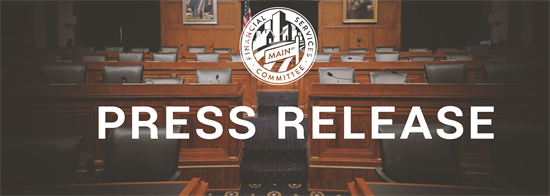House Passes Bipartisan Bill Bringing Financial Transparency to Iranian Regime
Washington,
September 21, 2016
WASHINGTON – In a vote of 282-143 on Wednesday, the House passed a bipartisan bill approved by the Financial Services Committee that will bring transparency to the financial assets held by Iran’s top political and military leaders and how these assets contribute to Iran’s funding of terrorism. House Financial Services Committee Chairman Jeb Hensarling made the following comments on the floor during debate on the legislation: The Islamic Republic of Iran is identified as both the world’s “foremost state sponsor of terrorism” and a country of “primary money laundering concern” by the United States. So the American people rightfully question the wisdom behind the Obama Administration’s decision to hand Iran $1.7 billion in cash as ransom for the release of several hostages earlier this year. There are a lot of questions the American people still have about this cash payment and a lot of questions the Obama Administration has not answered. But there are at least three things we already do know. One, we know that cash is the preferred currency of terrorists. Two, we know the Obama Administration’s payment to Iran was structured in such a way that makes it easy for Iran to move that money anywhere it wants for any purpose it wants. And three, we know that much of Iran’s terror activity is fueled by the vast sums of personal wealth acquired by its senior political and military leaders. Iran’s economy is characterized by high levels of official corruption and substantial involvement of its security forces – particularly the Islamic Revolutionary Guard Corps – in that nation’s business sector. Many members of Iran’s senior political and military leadership have acquired significant personal and institutional wealth by using their positions to secure control over major portions of the Iranian national economy. In fact, it is estimated that Iran’s top political and military leaders control one-third of Iran’s economy through personal foundations into which money from corruption is funneled. Because of this volatile mix of terrorist financing, corruption and wealth, it is vitally important for the United States to clearly understand the assets held by Iran’s most powerful military and political elite. That is the goal of the bipartisan bill we’re discussing today offered by our colleague Mr. Poliquin of Maine. This bill, the Iranian Leadership Asset Transparency Act, would require the Treasury Secretary to develop and post online a list estimating the funds and assets held by senior Iranian political and military leaders. Along with this estimate would be a description of how these officials acquired these assets and how these assets are being deployed. The report would be posted on the Treasury Department’s website in English but also translated into the three main languages used by the Iranian people so that the people of Iran might better understand the nature of their economy and how corruption is harming their fellow citizens. Under this bill, the report would also be in a form that is easily understandable and accessible to those in the financial or business sector who might be concerned about inadvertently doing business with an Iranian entity still covered by remaining sanctions. The Iranian government’s tolerance of corruption limits realistic opportunities for foreign and domestic investment, particularly given the significant involvement of its Revolutionary Guard in many sectors of the economy. This gives the Revolutionary Guard and its leaders vast amounts of funding to support terrorism at a time when the average Iranian citizen earns about $15,000 a year. The report required under the Iranian Leadership Asset Transparency Act would cover about 80 individuals, including Iran’s Supreme Leader, President, the 12 members of Iran’s Council of Guardians, the 42 members of its Expeditionary Council, and roughly two dozen senior military leaders. As I mentioned, the bill requires an estimate of the funds and assets held by those individuals, not a precise amount. Further, the proposal allows Treasury to separately furnish any sensitive information to Congress in a classified form. Finally, the bill permits the Administration to prepare the reports using a wide variety of publicly available and credible information, including commercial databases. Developing and keeping a current estimate of the funds and assets held by the top political and military leaders in Iran will also help financial institutions and private businesses comply with money laundering laws, and also help them more carefully choose with whom they do business. Just last week, the U.S. State Department said it couldn’t rule out the possibility that President Obama’s nuclear deal has emboldened Iran into becoming more confrontational with the United States. Indeed, as the State Department’s spokesperson admitted last week, there are “disturbing” trends when it comes to Iran. Since the President’s cash ransom was delivered to the ayatollahs, Iran has taken more hostages, it has stepped up its harassment of the U.S. military in the region, and it has started building a $10 billion nuclear plant with the help of Russia. Clearly, we need to know as much as we possibly can about how Iran is financing terrorism. We need to make sure financial institutions and private businesses do not inadvertently become involved in money laundering and sponsorship of terrorism.
### |


